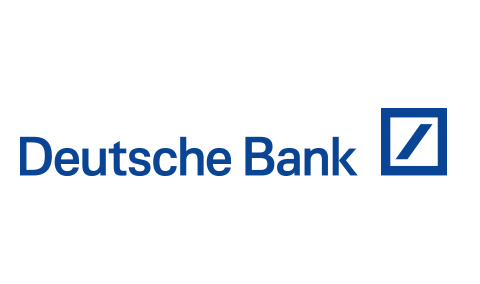
Redefining corporate treasury: The power of in-house banking

In the face of very challenging macro-economic developments, the need for an automated treasury function is more urgent than ever. How can in-house banks contribute to this goal and increase efficiency, improve headquarter control and lower costs?
In the ever-evolving world of treasury, corporations are in constant pursuit of innovative strategies to refine operations and optimise capital allocation. At the forefront of this innovation lies the powerful concept of in-house banking – a centralised treasury system specifically designed to oversee accounts, payments, and an array of financial transactions for subsidiaries.
But what is the true essence of in-house banking, and how has it revolutionised the financial landscape for global enterprises? Speaking at the 2023 EuroFinance International Treasury Management in a session hosted by Deutsche Bank, the treasurer at the Swiss pharmaceuticals and diagnostics company, Roche and the Swedish multinational home appliance manufacturer, Electrolux, were joined by Deutsche Bank to talk through the triumphs and tribulations, to achieve successful in-house banking structures.
Key takeaways from the panel discussion were:
- A centralised structure is essential to accommodate sprawling global operations efficiently.
At its core, an in-house bank emerges as a beacon of financial efficiency. It empowers treasurers to redirect on-balance sheet capital, whether sourced from cash receipts or procured at favourable borrowing rates, directly to their business units, subsidiaries, and even suppliers. This strategic move eliminates the traditional dependency on external liquidity partners. “In-house bank structures not only help achieve centralisation of liquidity and standardisation of payment and collection processes but are also enablers of real time treasury,” adds Parvathy Ramachandran, Head of Cash Management Sales, UKI and Nordics, Deutsche Bank, who joined the corporate treasurers on the panel.
Roche, a global giant in the healthcare sector, recognised the inherent challenges of managing liquidity across its vast operational expanse, spread over numerous countries with their own regulatory nuances. Grappling with fragmented financial systems and a myriad of bank relationships often led to inefficiencies and an opaque view of a company’s global financial health.
Stefan Windisch, senior cash manager of treasury operations at Roche recalled the initial forays into in-house banking, noting, “The moment we started the in-house banking, cash pooling was disruptive and new.” This was a testament to the ground-breaking approach the treasury team at Roche was taking, upending traditional norms.
Windisch further illuminated Roche’s journey, stating, “We launched cash pooling and such thoughts 20 years ago, and back then, the idea was very disruptive. Since then we basically went into every market and ask, ‘Can we do it this way?’”. It wasn’t just about the present for Roche but envisaging and preparing for the financial landscape of the future.
For Roche, the in-house banking initiative wasn’t merely a pivot in financial strategy but a transformational shift. It symbolised a move towards centralisation, efficiency, and a clear vision for the future. The goal was clear: architect a durable, scalable, and lucid financial infrastructure capable of accommodating Roche’s sprawling global operations. Two decades later their in-house bank has added many services to its affiliates up to being the sole banking partner for almost one third of their Group subsidiaries.
- Centralising FX operations through in-house banking ensures optimal financial health and cost-effective hedging strategies.
As companies diversify their operations across global landscapes, they invariably confront the intricate challenges of foreign exchange (FX) management. In-house banking can address these challenges. The strategy, as Roche and other global giants have employed, involves consolidating FX operations, drawing them away from the peripheral functions at local branches and instead navigating them through a centralised, efficient in-house system.
Ramachandran highlighted the operational efficiencies that in-house banking brings, especially in the realm of FX management. She noted, “rather than each subsidiary maintaining its own functional currency and various foreign currency accounts, the shift has been towards a structure where only the in-house bank manages all different currency accounts.” Ramachandran emphasised how this approach streamlines transactions: “So if for example a Spanish entity has to make a payment in US dollars, it will deploy its in-house bank using its dollar account to make that payment. This definitely brings massive synergies from the standpoint of foreign exchange.”
- Establishing an in-house bank requires careful navigation; stakeholders must embrace a mindset shift and rigorous controls to harness its transformative benefits.
However, the journey of establishing an in-house bank isn’t devoid of challenges. It’s a tapestry of intricate operations, ranging from meticulous intercompany lending practices to the subtleties of FX management. This vast array mandates stringent controls and oversight. Gisele Benetollo, head of cash management at Electrolux, discussed the intricacies of her journey and shed light on the importance of continual communication throughout this complex implementation process, emphasising the need for alignment across all stakeholders.
“We have implemented in-house bank for payments and all intercompany transactions, and currently we are on the journey to evaluate moving collections to the in-house bank, therefore we still have physical accounts in each country,” she shared, illustrating the traditional system they had, where customers would pay into these accounts, and funds would be channelled through the company’s cash flow. This setup, while functional, didn’t offer the agility and centralisation that an in-house banking system could provide.
Benetollo highlighted that the transformation to an in-house bank was not merely about switching systems. It was about adopting a mindset shift across the organisation. This meant adapting to new systems and processes while ensuring that operations remained consistent across various regions.
Reflecting on the transformation, Benetollo further shared, “After the implementation, system and processes are robust and seamless… we work in a very efficient way. I think we have learned a lot throughout the project.” This testament not only underscored the value the in-house bank brought to Electrolux but also highlighted the learning curve and adaptability required to make such a system work optimally.
Expanding on the subtleties of implementing in-house banks, Ramachandran also touched on the importance of getting everybody on board early in the process. “Early engagement with stakeholders, especially business teams is needed in order to have a picture of what the ultimate solution could look like,” Ramachandran shared. This planning and foresight, according to her, are crucial to maximising the efficiency of in-house banks.
For example, the implementation of collections on behalf – which requires a company’s customer to pay into virtual account numbers – requires careful change management. Essentially, virtualisation of the corporate bank account structure removes the need for most physical accounts. Instead, it connects a theoretically unlimited number of unique aliases, or virtual, account numbers to a single (or more if required) traditional physical master bank account.
In the grand scheme of things, the advent of in-house banking signifies a paradigm shift in corporate treasury management. By offering tighter controls, transparency, and a centralised approach, it bestows businesses with the competitive edge they need in today’s dynamic markets. As corporations continue to evolve and scale new heights, in-house banking promises to be their stalwart companion, reshaping financial narratives and setting new benchmarks in corporate treasury and financial operations.